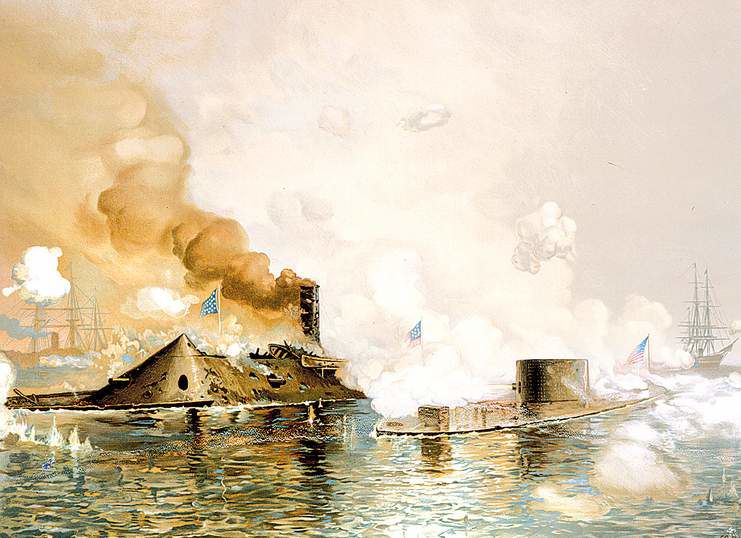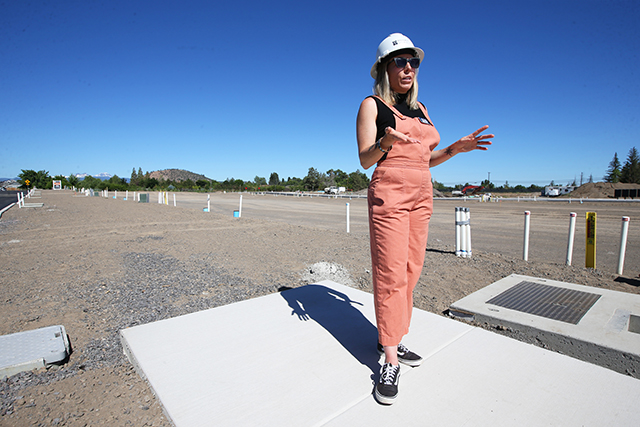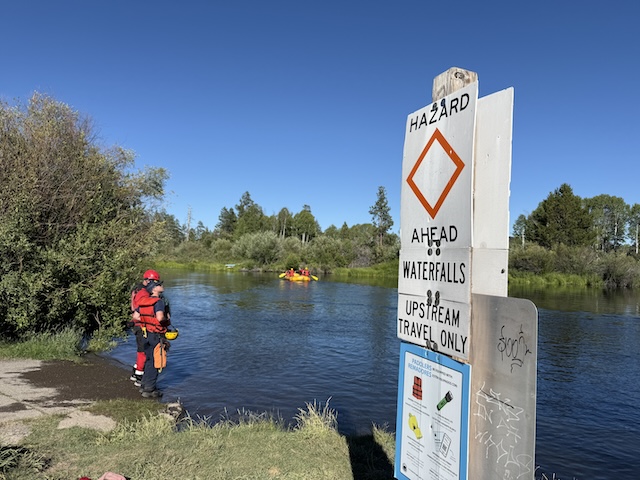A radical naval breakthrough with less than ironclad secrecy
Published 5:00 am Tuesday, August 9, 2011

- An undated handout image of a chromolithograph titled “Monitor & Merrimac, First Fight Between Ironclads,” by Julian Davidson, 1886. The technology that revolutionized naval warfare started with a five-sentence advertisement in 1861, and resulted in the USS Monitor, right, less than six months later.
NEWPORT NEWS, Va. — Military secrecy was a bit lax during the Civil War, by today’s standards, but contractor deadlines were a lot tighter.
The technology that revolutionized naval warfare began with a five-sentence message delivered to The New York Times 150 years ago, on Aug. 9, 1861, and the information was not exactly classified. It was an advertisement placed by the Union Navy, to appear the following six days, under the heading “Iron-Clad Steam Vessels.”
Trending
“The Navy Department will receive offers from parties who are able to execute work of this kind,” the ad announced, describing its desire for a two-masted ship either of iron or of wood and iron combined. The plans had to be submitted by early September, giving designers less than a month.
Less than six months later, a shipyard in Greenpoint, Brooklyn, launched not merely an ironclad but an entirely new kind of warship. The USS Monitor had no masts and no line of cannons. It was essentially a submarine beneath a revolving gun turret, something so tiny and bizarre-looking that many experts doubted the “cheese box on a raft” would float, much less fight.
But somehow it survived both the Navy bureaucracy and a broadside barrage to become one of the most celebrated ships in the world. Long after the ship sank in a storm off Cape Hatteras, N.C., the turret remained a cultural icon: an “armored tower” in Melville’s poetry, an image on book covers and film posters, a shape reproduced in items from toys to refrigerators.
Now the original turret, which was recovered from the ocean floor nine years ago and placed in a freshwater tank to protect it from corrosion, is on display again. It has been temporarily exposed to the air so that it can be scraped clean — very carefully, in front of museum visitors and a live webcam — by a team of researchers at the USS Monitor Center of the Mariners’ Museum here in Newport News. The team expects to have nearly all the barnacles and sediment removed by the end of this month, giving the public a new look at the dents from the Confederate cannonballs and shells that would have sunk any ordinary ship of its day. Then the turret will be submerged again in fresh water for 15 more years, until enough ocean salt has been removed from the metal to allow it to face the air permanently.
Lucky breaks
The Monitor has been so familiar for so long that it is hard to realize just how radical it seemed at the time — and how much luck was involved in building it. The ship’s history is a case study in the difficulties of technological innovation. The Monitor had a genius for a designer in John Ericsson, and a lobbyist so well connected that President Abraham Lincoln made a personal plea for it, yet when a scale model was first presented in Washington, the members of the Navy’s Ironclad Board rejected it.
Trending
“Take the little thing home and worship it,” one board member said disdainfully, “as it would not be idolatry because it was made in the image of nothing in the heaven above or the earth below or the water under the earth.”
The Monitor’s designer might have taken that as a compliment. Ericsson once described himself in a letter to Lincoln as having “practical and constructive skill shared by no engineer now living.” But skill was no guarantee of success, as he knew from bitter experience.
A native of Sweden, Ericsson moved to London and produced one innovation after another, including a screw propeller to replace the paddle wheel on the steam-powered warship. But the British Admiralty was too conservative to adopt it, and he foundered financially. After a stint in debtors’ prison, he found a new patron and moved to New York.
The U.S. Navy commissioned a warship, the Princeton, that proved to be one of the most advanced in the world, thanks to a screw propeller and other innovations by Ericsson. But after its success, he was pushed aside by his partner in the project, Robert Stockton, an American naval officer (and future U.S. senator from New Jersey) who took public credit for Ericsson’s inventions — until a public disaster.
In 1844, during a demonstration cruise on the Potomac River with President John Tyler and much of official Washington aboard, a cannon on the Princeton exploded, killing the secretary of state and secretary of the Navy, along with several others. Ericsson wasn’t there — the limelight-stealing Stockton had made sure to exclude him — and he had nothing to do with the faulty cannon, which his partner had built and installed.
But Stockton managed not only to shift public blame to Ericsson but also to help prevent him from being paid for all his work designing the ship. After that experience, Ericsson wanted nothing more to do with Washington. But he went on innovating, and during the Crimean War he tried to interest the French in building an ironclad.
“Alas for the wooden walls that formerly ruled the waves!” he wrote to Napoleon III in 1854, sending along a scale model of a turreted ironclad closely resembling the Monitor. The French passed on it.
Traditionalists in the U.S. Navy remained suspicious of any kind of ironclad, but by the Civil War they were forced to reconsider. The Confederate Navy, desperate for something to neutralize the Union’s immense numerical advantage, began converting a wooden frigate, the former USS Merrimack, into an ironclad.
The fear of the Confederate ship led to the Union’s newspaper advertisement, which attracted more than a dozen proposals, but none from Ericsson. The Ironclad Board gave preliminary approval to two relatively conventional armored vessels, including one proposed by Cornelius Bushnell, a well-connected Connecticut railroad executive and shipbuilder who — in the classic tradition of Washington lobbying — had been instrumental in creating the board that approved his design. But he turned out not to be a classically self-interested lobbyist.
To win final approval for his design, Bushnell had to provide calculations demonstrating its stability, and he happened to seek technical help from Ericsson. He went to the engineer’s home in downtown New York. Ericsson did the calculations confirming the ship’s stability, and then pulled out a pasteboard model of his own ironclad with a turret.
Ericsson managed to build the ship in less than four months while dealing with continual worries from the Navy and skepticism from the public. The New York press corps began calling the ship “Ericsson’s Folly” after some engine and steering problems during the ship’s trials in the East River in February 1862. But Ericsson quickly fixed them, and the Monitor was en route to Virginia on March 8, the day the Confederate ironclad made its debut.
The former Merrimack, renamed the CSS Virginia, destroyed two Union warships that Saturday and seemed ready to finish off the rest of the Union fleet at Hampton Roads the next day. When the Monitor arrived that night, Union sailors were shocked by its tiny size and despaired of its having any chance against its hulking opponent. In Washington, panicked officials worried that the invulnerable Confederate ironclad would soon be shelling the White House.
Model of success
But the next day, with tens of thousands of people watching from the shores, the tiny Monitor fought the Virginia to a draw. The 8-inch iron armor on its turret was dented slightly but withstood shot after shot from the Virginia’s cannons, including some fired from within 30 feet, and the smaller ship had a much easier time maneuvering. It became the model for a succession of ironclads and ultimately for the revolving turrets on today’s battleships.
By removing the threat of the Confederate ironclad, the Monitor kept the Union’s ships safe in the ensuing months, until it sank at the end of 1862 in a storm southeast of Cape Hatteras that claimed the lives of 16 crew members. Eventually its wreckage was discovered 230 feet below the surface, and in the late 1990s Navy divers and archaeologists from the National Oceanic and Atmospheric Administration’s Monitor National Marine Sanctuary began retrieving its pieces.
When the turret was recovered, it was so saturated with sea salt that it was vulnerable to rapid corrosion if the salt reacted with oxygen in the air. To protect it and gradually remove the salt, researchers submerged it in a tank of fresh water for most of the past nine years.
After its coming 15-year stint back in fresh water is over, the researchers expect to display it in a gallery at the Mariners’ Museum, along with the other artifacts and the full-size replica of the Monitor there now. But this summer, the turret is being briefly exposed to the air in the museum’s laboratory so a team of seven workers with chisels, hammers and pneumatic tools can remove the hard crust — called concretion — of sediment, sand, coral, shells, calcium and other debris that accumulated during 140 years on the floor of the ocean.
With the water temporarily drained from the tank, visitors can see the inside of the turret and imagine the battle scene with the help of Dave Krop, the conservation project manager. The turret was clearly not a place for claustrophobes, given that there were 19 men and two 13-foot-long cannons squeezed inside a revolving cylinder that was 9 feet high and 20 feet in diameter.
“It was really quite a crowded, hot, smoky place to be, but it had to be orderly for the guns to operate safely,” Krop said as he pointed out the gun ports through which the two cannons fired. On the opposite wall were the remnants of a couple of mistakes during a test firing in New York: dents left by the recoil of the guns when the crew didn’t properly set the braking machinery.
On the turret’s outside wall were dents from Confederate cannonballs, including one that knocked some nuts off bolts — but Ericsson had planned for that possibility. He had designed the interior turret with sheets of wrought iron covering the nuts and bolts so that there’d be no shrapnel flying inside to injure the crew.
“We keep seeing how exacting and precise Ericsson was in designing the ship,” Krop said. “To me it’s mind-blowing that he was able to get so many details right while building a fantastical new kind of ship in four months. Today it takes years to build an ordinary ship. We can’t do a contract for a warship in four months, much less build one.”








